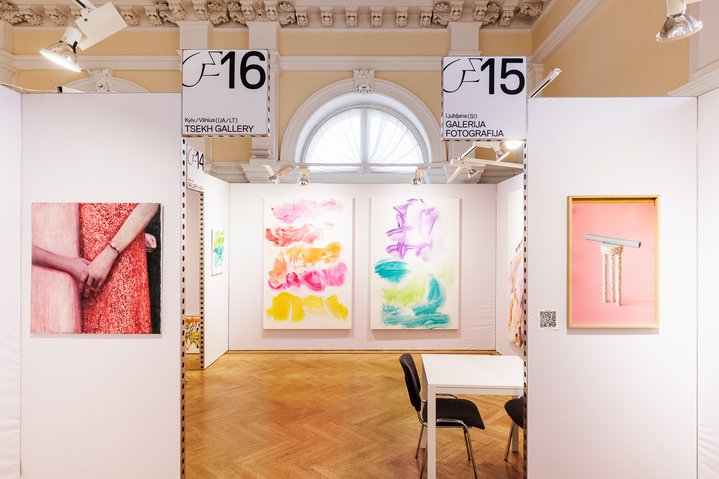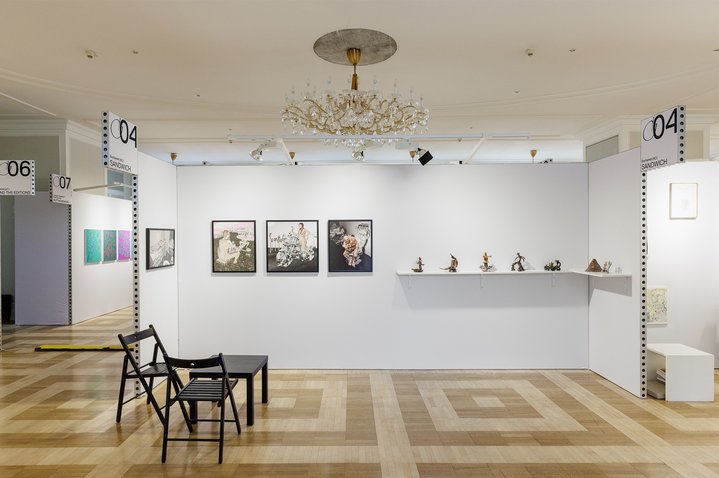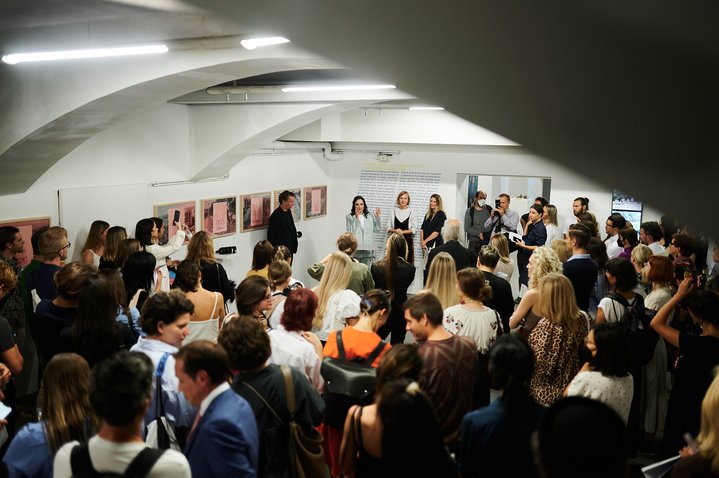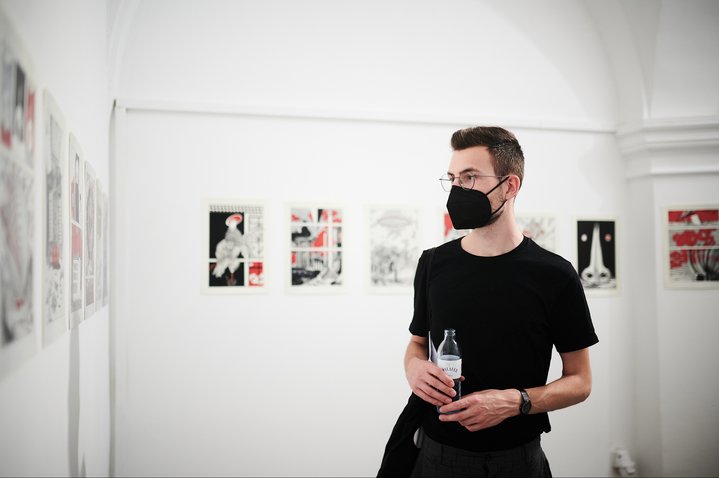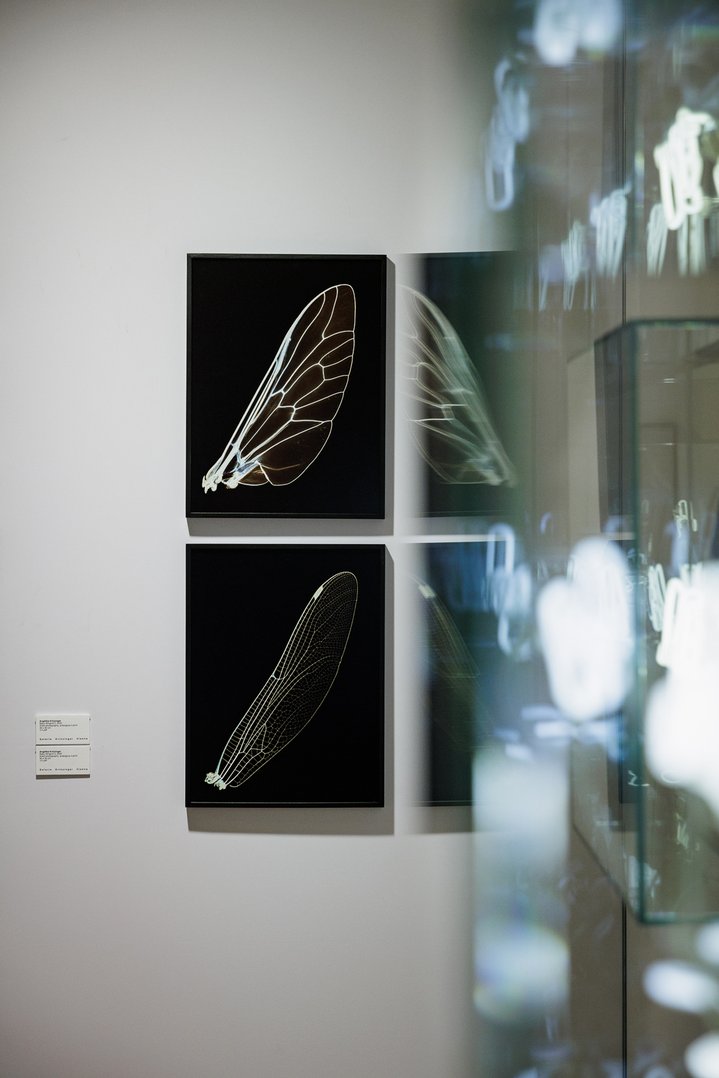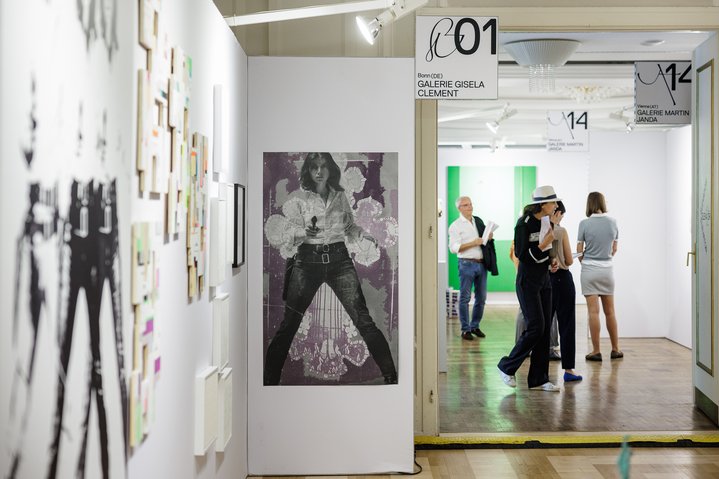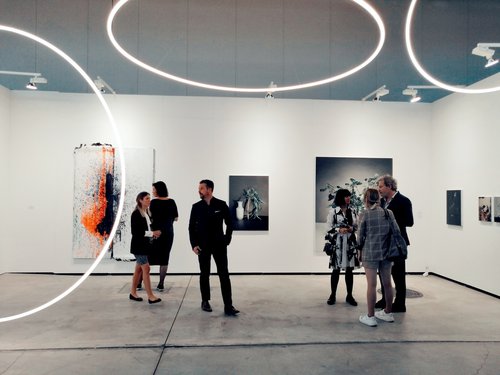viennacontemporary 2022 in Kursalon Vienna. Photos: kunst-dokumentation.com
viennacontemporary art fair is trying to reinvent itself
This September viennacontemporary, the international art fair with a special focus on Central and Eastern European contemporary art, took place right in the heart of the Austrian capital in the elegant and historic Kursalon Hübner.
Having moved to a dilapidated part of the old post office building last year, this year the fair went upmarket to a new location which could not have been more different: the Italian Renaissance style Kursalon in Vienna’s City Park. Adapting to the architectural quirks which an old building can throw up to planners of contemporary art fairs and although retaining its reputation as the main commercial art platform between East and West, viennacontemporary found itself evolving into a boutique fair with a local flavour. The upside: it brought the fair to the Viennese people and at the same time showed how the Viennese themselves could put on a great show with international flair: “We want to go back to the heart of Vienna and show Vienna to the rest of the world”, managing director Markus Huber told me at the opening.
As last year, the number of galleries represented at the fair was significantly smaller than before the pandemic. A total of 62 galleries from 17 countries were present, participants coming from Bulgaria, Georgia, Latvia, Lithuania, Slovenia, Serbia, Slovakia, and the Ukraine. Among the influential international galleries were Austrian Galerie Krinzinger, Galerie Volker Diehl from Berlin, Galerie Eva Presenhuber, Galerie König and KOW Berlin from Germany. The average price for the artworks on offer was accordingly boutique rather than on an industrial scale: the upper end of the price range was a modest €15,000 to €40,000, with prices starting as low as €500 to €800 for works on paper, and small sculptures going up to €3,000, and around €6,000 for paintings in the middle price segment. Austrian artist Sophie Gogl (b. 1992), already well known to local Viennese art collectors, was selling for €11.500 at the KOW booth, while the ubiquitous top gallerist Johann König who has art spaces not only in Berlin but also in Seoul and Vienna, showed works by Jeppe Hein (b. 1974), Jeremy Shaw (b. 1977), and Jorinde Voigt (b. 1977) for €12,000 to 18,000. This year, Berlin-based Volker Diehl selected two Ukrainian artists, Georgian born Badri Gubianuri (b.1962) and Tiberiy Szilvashi (b. 1947), whose works were offered for €2,400 to €3,000 for the smaller formats and up to €22,000 for the largest oil painting exhibited. The gallery chose to shown some rather neutral, abstract works, in marked contrast to the atmosphere on the floor above, where three Ukrainian galleries were displaying works.
Of course it would have been unthinkable for this year’s edition of viennacontemporary to sidestep the current political agenda. All the more so as at the beginning of the year, viennacontemporary lost its main shareholder, Russian collector and art philanthropist Dmitry Aksenov. He had made the decision to step down and resign as chairman of the advisory board due to the conflict in Ukraine in order that the fair could carry on as normal, retaining its artistic director Boris Ondreička and managing director Markus Huber.
As well as changes in scale and location, the organization of the fair went through some more fundamental transformation earlier this year when it became a non-profit organization. In so doing, it was eligible for state support to provide more visibility for the emerging local art scene, such as Zone 1 on the lower floor which was sponsored by the Austrian Ministry of Culture. This new format, in which the fair gave one-third of its space over to young artists, proved very popular with the visitors. All the artists chosen for this section by curator Tjaša Pogačar, were under the age of 40 and connected with Vienna, either born, living, or working there. The display of the artworks was also more relaxed than on the floors above, the unfurnished basement of the Kursalon gave more breathing space and freedom for galleries and artists to exhibit their work. In Zone 1 there were multiple installations and sculptures, which you did not see on the floors above. Selma Salman (b.1991), a Budapest based artist who works with recycled car parts and paintings on scrap metal, sold out already on the first day. St Petersburg born Julia Belova (b. 1991), the only artist of Russian origin at the fair, hung her ceramic snakes on massive chains that had already been shown previously in Vienna as part of an exhibition at Sotheby's. Nearby, Kyiv born Nika Kupyrova (b. 1985), who lives and works in Vienna and Prague, presented her ceramic sculptures which resemble mushrooms. Slovenian artist Gašper Kunšič (b. 1992) also supported the Slavic theme, the poetic red white and blue colours of his work refers to the cultural heritage of his country, and the theme of migration seemed to be well received by buyers, as almost all the works at the stand were sold out.
Polish artist Agnieszka Polska (b. 1985), represented by Galerie Georg Kargl in Vienna, showed prints and a video installation of her latest works. Incidentally, Polska is not the only artist at the fair who participated in the Venice Biennale this year. The Naked Room from Kyiv showed work by Pavlo Makov (b. 1958), who represented the Ukraine in Venice. His large format, sombre and emotionally charged prints were very well received by local buyers, as his works, valued at €35,000, were almost completely sold out on the second day of the fair.
CRONE Gallery selected Ashley Hans Scheirl (b. 1956), another participant of this year’s Venice Biennale, for the fair, who, together with her partner Jakob Lena Knebl (b. 1970), was shown at the Austrian national pavilion. As for major international galleries, Krinzinger showed works by Eva Schlegel (b. 1960), charging €15,000 per print, photographs by Marina Abramovic (b. 1946) at €40,000, and signature mirror and neon light cubes by Brigitte Kowanz (1957-2022) priced at around €37,000-40,000. All these above mentioned artists have been included at the Venice Biennale. Galerie Steinek also followed suit and showed editions and small installations by Renate Bertlmann (b. 1943), who in 2019 had an exhibition at the Austrian National Pavilion in Venice.
This year, one of the focal points of the fair was Statement Ukraine, a project to support Ukrainian artists and galleries. Three Ukrainian galleries occupied the largest booths on the upper floor: The Naked Room from Kyiv, TSEKH Gallery from Kyiv and Vilnius, and the Voloshyn Gallery also from Kyiv. The latter presented Ukrainian artist Maria Sulymenko (b. 1981), who was also selected for her first solo exhibition in Austria at the Georg Kargl BOX in Schleifmühlgasse. In addition, viennacontemporary organized an exhibition of Ukrainian and international artists curated by Kateryna Filyuk in one of Vienna's leading experimental art spaces, ‘das weisse haus’.
Similar to previous years, viennacontemporary prepared a collateral cultural program for international visitors to the fair, including visits to important private collections of Viennese collectors; artist and expert talks with established cultural guardians such as Agnes Husslein-Arco, director of the newly opened Heidi Horten Museum next to the Albertina. Each
evening, there were free music events at the Vienna Konzerthaus and Volkstheater, with a focus on contemporary electronic music which proved particularly popular with Vienna's young art scene.
At the opening, on the spectacular terrace overlooking the Stadtpark, there was an upbeat mood; among the crowd there were familiar faces from the local business elite and top Viennese artists. The local art crowd enjoyed hanging out in the elegant interiors of the Kursalon and the pouring rain did not dampen their enthusiastic impressions of the fair. Despite the overwhelmingly positive response from the local art scene, there was some criticism aimed at the new choice of venue. Artists complained that the Kursalon building was just not adaptable to exhibiting artworks and that the booths were crowded. It was challenging to view large-scale paintings because you could not step back and view from any distance, a crucial baseline consideration in art fair organisation. Nevertheless, visitors also liked the easy navigation of the fair, and the closing cocktail party came with high spirits and few regrets. The galleries were vocal in sharing their impressions of the fair's good organization and on tap client support. There was a sense that the attentive yet unobtrusive staff was ready to help at any moment, and communication was efficient and on the whole surpassed expectations.
However, when it came to the commercial success of this year’s new boutique fair, opinions were divided. Some of the local Viennese gallerists were satisfied with the attendance levels, but rumours ran about rather poor sales, whereas the young galleries from Eastern Europe were excited to share buoyant sales results already on the first day, rehanging their booths with new works from stock. Gallerists also noted that it was generally works on paper and prints which dominated the top segment at viennacontemporary.
viennacontemporary






